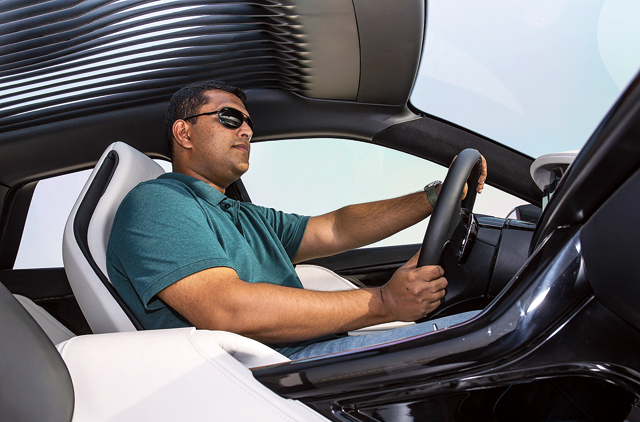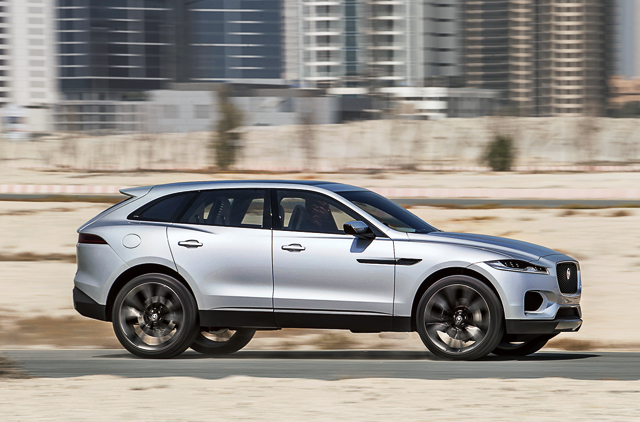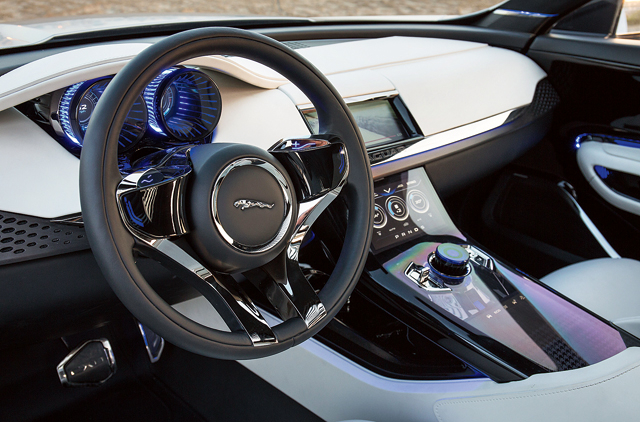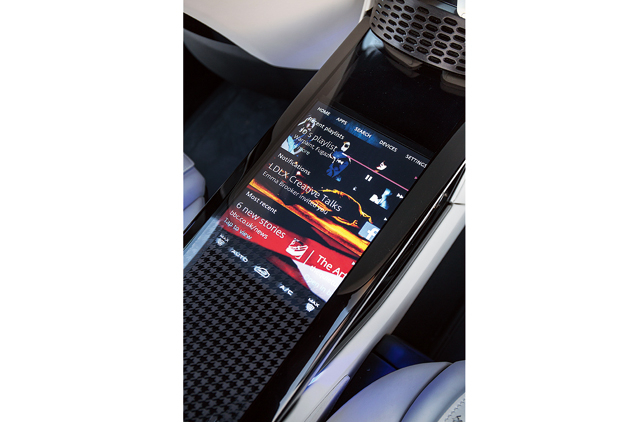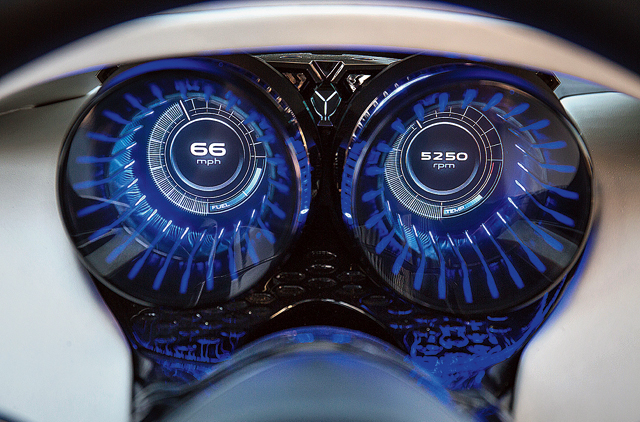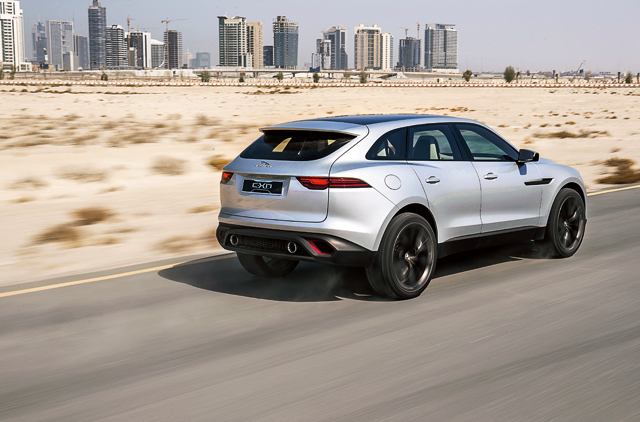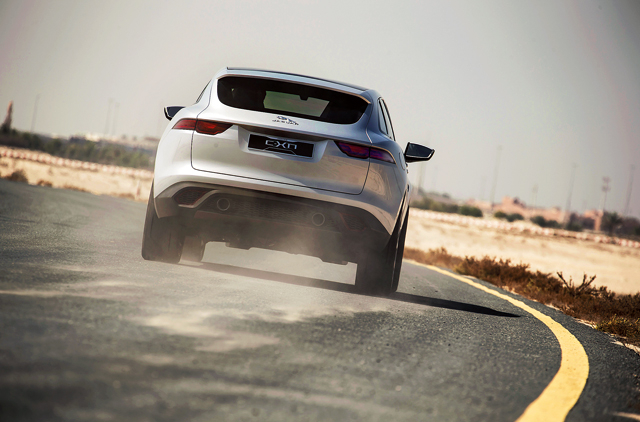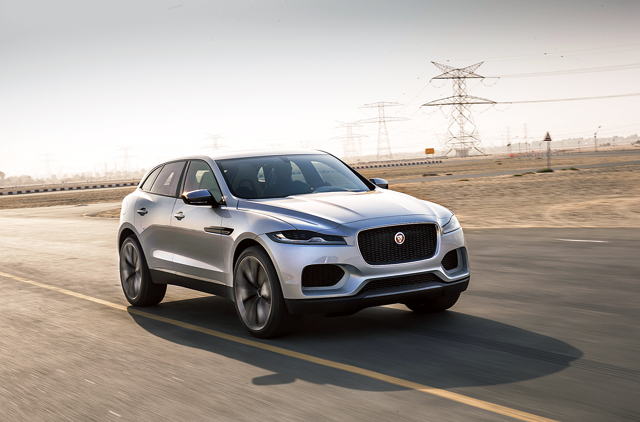
“Be extra careful… it’s precious,” was the friendly yet firm instruction from Jaguar’s director of design Ian Callum as I walked towards the air-conditioned tent that housed his latest baby, the C-X17 SUV concept. There was no missing the look of the reluctant parent on his face, but it’s only understandable that for someone who has spent a lifetime designing sporty coupés and saloons and laid the foundations for modern-day Aston Martins and Jaguars, creating an SUV would’ve been a huge shift.
However, Callum seems to be resigned to the fact that this is what the world wants and that this segment is going to be an integral part of Jaguar’s future.
Callum isn’t alone in his love for sportscars and supercars. But the sheer amount of money that’s required for research and development before one of these vehicles is put into production is mindboggling. That’s where money-spinners like SUVs and mid-size saloons come into the picture. The world wouldn’t have had a 918 Spyder today if Porsche hadn’t gone against the multitude of clamouring purists to make the Cayenne. Even the most optimistic of Porsche executives couldn’t have foreseen the phenomenal success that the SUV eventually proved to be. This prompted almost all major premium carmakers including BMW and Audi to jump on the bandwagon and taste similar success. Even unlikely brands like Maserati and Bentley sensed the huge monetary potential here and tested the waters with SUV concepts.
And now, after resisting the temptation all these years, Jaguar has decided that it’s time it also cashed in on this prodigiously expanding segment. In an earlier chat, Ralf Speth, CEO of Jaguar Land Rover, insisted the C-X17 is just a concept while at the same time conceding that the market potential is huge. “The C-X17 is a concept car for a very small crossover, and at the moment it’s just that, a concept,” he said. “But the market predictions are very positive.” Like Porsche, the potential success of its SUV might just be what Jaguar needs to resurrect shelved supercar projects like the C-X75.
Speth himself admitted that it’s the limitation of being a small company that’s holding Jaguar back from producing a halo supercar. “All concepts cannot be built, although as an engineer myself, I’d like to build every concept car that we have. But being a small company we can only do things within our limits and cannot deliver everything.” Is the C-X17 good enough to shoulder the huge responsibility of heralding a change in direction for this storied British marque? After a delay of about 15 minutes (being a prototype, it needs to cool down after every 20-minute drive) I was told it was ready to be driven. Expecting a Cesium Blue stunner to emerge as the minders unfastened the gazebo’s entrance, I must admit I was a bit disappointed to see a rather dull silver prototype instead. But that initial disillusionment quickly faded as I walked around the car a couple of times. Silver or not, this crossover is a definite design triumph for Callum and his team. Pictures really don’t do justice to the concept’s looks and presence.
At 4,718mm long, 1,959mm wide and 1,649mm high, the C-X17 looks bigger than it appears in photographs. And with design inspiration taken from almost all of Jaguar’s current vehicle range, it looks much more attractive too. The grille is an evolution of the XF’s, the slim headlights look like those on the XJ, and the chiselled derriere takes evident cues from the F-Type. But thankfully, this family resemblance doesn’t end up in the C-X17 looking like a bloated XF or an obese F-Type. The fine lines, combined with its hunkered-down stance and distinct creases on the bonnet and the beltline, make the C-X17 a markedly more handsome proposition than potential rivals like the Audi Q5 or the BMW X3.
Although not fully functional in this version, the cabin is just as design-intense as the exterior. Apparently, the styling team drew inspiration from things as varied as lampshades and stools to shoes, jackets and handbags. I struggle to find any of those in there but what I can tell you is that the designers have made full use of the 2,905mm wheelbase of the car.
The cabin seems airier and roomier than that of any rival in this class. There are four individual bucket seats, a simple yet futuristic dashboard and a centre tunnel that runs the length of the car all the way from the centre console through to the rear seats. The centre console itself is one large flowing touchscreen, which Jaguar has dubbed the Interactive Surface Console. Essentially a series of touchscreens under a panel of transparent acrylic, Jaguar claims this enables passengers to connect and share files and messages with each other and the outside world via social media. Behind the steering is a twin-dial configurable TFT instrument gauge.
Unlike earlier concepts, almost everything about the car looks pretty close to production-ready. This includes the door handles, mirrors and even the cabin, which is a mix of leather, ruthenium (a cousin of platinum), milled aluminium and black brushed anodised metal finishes.
But how does it drive? Well, the concept that I got to drive has barely any functional parts inside except a spongy brake pedal, a heavy accelerator pedal and a rod that sticks up from the centre armrest that I was told was the gear lever.
Yes, there’s a rotary dial, finished in ruthenium, which is supposed to rise up and give you the customary Jaguar “handshake”, but that isn’t functional in this prototype. The engine, the same supercharged V6 that powers the F-Type, is much louder here, obviously due to non-existent sound dampening. However, I’m not allowed to rev the engine beyond a point and get to spend about 15 minutes behind the wheel before the C-X17 goes back into its air-conditioned tent.
Naturally, there’s very little to gauge about how it drives from such a brief stint behind the wheel. However, despite the harsh ride and the overall lack of finesse that’s normal in a prototype, you cannot but notice the low, sportscar-like seating position that is uncharacteristic of SUVs. If these attributes are translated undiluted into the production version, the Germans will have a formidable foe to take on.
To get a more realistic idea, I asked Graham Wilkins, vehicle engineering manager in charge of the new intelligent aluminium architecture and the new premium mid-size saloon, to tell me what he thinks a production Jaguar SUV should drive like.
“It should show the same characteristics as any Jaguar, from an F-Type to an XF or an XJ,” he said, without batting an eyelid. “It should be ‘alive’; it should be engaging, rewarding and dual in its nature. So it should be capable of smooth, refined driving when it’s needed and at the same time be fun and engaging.”
He also believes that the design and the driving experience would set the car apart from its main competitors.
The final production version will no doubt live up to these expectations as it will be underpinned by Jaguar’s much-hyped modular and scalable aluminium architecture that, according to the carmaker, will be less restricted by technical or manufacturing constraints across a number of different segments.
“This architecture is capable of many things. We were looking into the future when Jaguar might want to enter a number of new segments with a number of new products. We wanted an architecture that would be able to respond to these demands as quickly as possible. This was the main business driver behind the architecture,” adds Wilkins.
It will also allow Jaguar to easily handle higher volume production of its newly announced 3 Series rival and the C-X17 once it’s green-lighted. That in turn means the bean counters at Coventry will loosen their purse strings to help such magnificent concepts as the C-X75 see the light of day. If that’s the case, it doesn’t really matter how this crossover will handle, as the money it brings in will go a long way in making the world a better place — at least for car enthusiasts.



